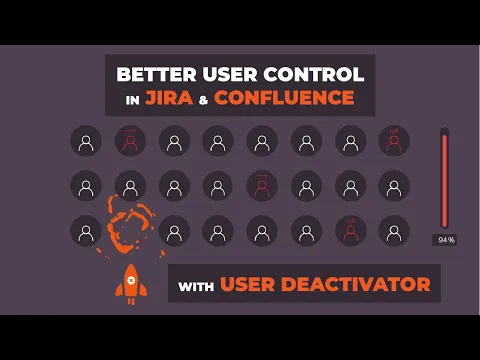User Management - License & User Deactivator for Bitbucket
OVERALL RATINGS
INSTALLS
24
SUPPORT
- Partner Supported
Key highlights of the appUser deactivate automates your bulk user management, automatically removes groups, inactive, and occasional users to save licenses

Best way to remove access to Bitbucket
Keep the directory clean of non-active users.
Filter users by last activity date. You may exclude users / accounts who are or not members of certain groups, as well as by application access.
Better than scripting
User Deactivator works better than any Scriptrunner fix:
No code UI
No compatibility maintenance
The filter will find inactive users for you. No need to specify them!
Fully automated
Optimize license consumption & delay upgrades
Don’t upgrade to a higher tier just because you’ve failed to deactivate a few users.
The license optimization feature prevents occasional users from consuming a full license.
Supporting media
More details
With user Deactivator you can ensure that your user directory reflects the actual active users in your instance.
Deactivated users can enter again without requesting access in combination with SAML SSO or if you enable the license optimization option.
Keep your directory clean of inactive users!
MAIN FEATURES
- Filter inactive users based on the last activity date (and not their activation status)
- Automatically deactivate multiple users
- Automatically remove users from groups
- Or manually deactivate any number of users in bulk
- Exclude members of specific groups from deactivation/ group removal
- Fully-fledged user browser
- Receive reports when users are deactivated
Also available for Confluence and Jira.
Resources
Download
Get the .jar file downloaded to your system
App documentation
Comprehensive set of documentation from the partner on how this app works
EULA
Get the End User License Agreement for this app
Privacy and Security
Privacy policy
Atlassian's privacy policy is not applicable to the use of this app. Please refer to the privacy policy provided by this app's partner.
Partner privacy policySecurity program
This app is part of the Marketplace Bug Bounty program.
About Bug Bounty programVersion information
Version 6.0.0•for Bitbucket Data Center 6.2.0 - 9.6.1
- Release date
- Apr 7th 2025
- Summary
- Maintenance Release
- Details
Updated internal libraries & 3rd-Party dependencies. The new major version 6 is related to the License Optimizer feature which is only present in the Jira and Confluence version of this app.
- Payment model
- Paid via Atlassian
